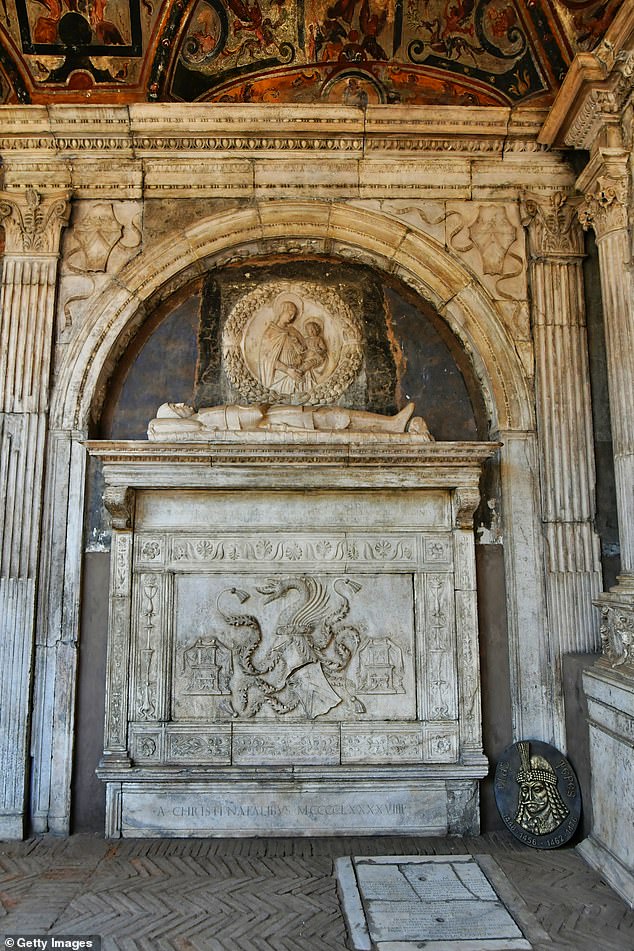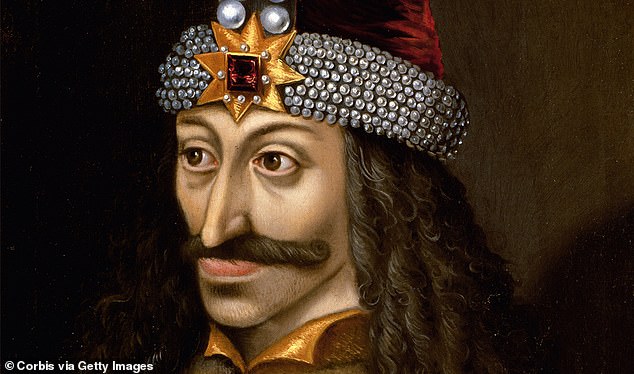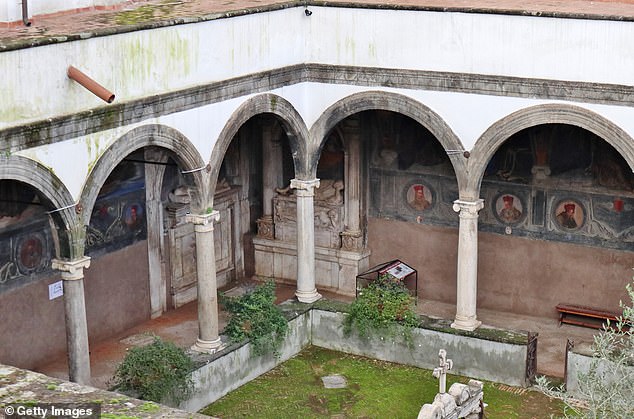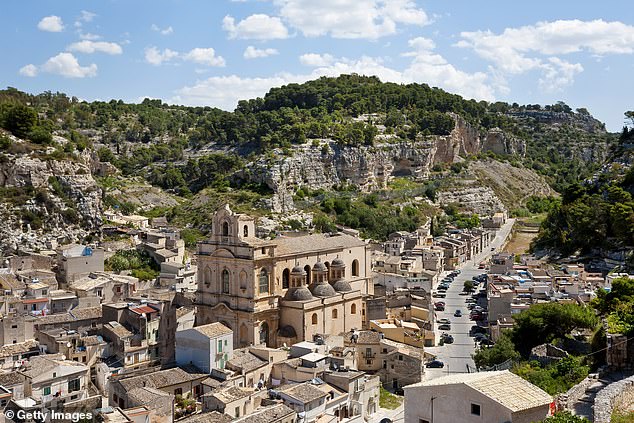A mysterious inscription discovered in a centuries-old tomb in Naples could finally uncover the long-lost burial site of Count Dracula.
Researchers say the burial site, tucked within the Turbolo Chapel of the Santa Maria la Nova church complex, could belong to Vlad III, the real-life inspiration behind Bram Stoker’s infamous 1897 vampire novel.
Known as Vlad the Impaler, the 15th-century Romanian ruler earned his grim nickname through brutal tactics, including impaling his enemies on massive stakes.
Though he was reportedly beheaded in 1476, his grave has never been conclusively identified.
After more than a decade of study, researchers deciphered a mysterious, Latin-like inscription on the tomb, uncovering two key words: ‘Blad,’ interpreted as ‘Vlad,’ and ‘Balkan,’ the region he once ruled.
The marble tomb also features a knight’s helmet crowned with a dragon’s head, a symbol tied to the Order of the Dragon, a medieval secret society that once counted Vlad among its members.
Flanking the tomb are two sphinx-like statues, which experts believe may serve a dual purpose.
In Italian, the sphinxes may reference ‘Tebe,’ or Thebes, the ancient Egyptian city. But scholars suspect it’s also a cryptic nod to ‘Tepes,’ the Romanian epithet for Vlad, meaning ‘the Impaler.’

The tomb of Dracula, in the cloister of the church of Santa Maria la Nova, is now a museum of history

Known as Vlad the Impaler, the 15th-century Romanian ruler earned his grim nickname through brutal tactics, including impaling his enemies on massive stakes
The team began their research in 2014 after learning about a theory that suggested Vlad’s daughter, Maria Balsa, smuggled his remains out of Romania following his death.
Historical records suggest she was later adopted by the powerful Ferrillo family of Naples, sparking the idea that Vlad was laid to rest in what is now Italy.
Maria is also believed to have arranged his burial in her father-in-law, Matteo Ferrillo’s, tomb inside the same chapel where her father may have been laid to rest.
The tomb sits in the small cloister of the church complex, a former monastery for Franciscan Friars and now one of the most visited religious sites in the city.
What sparked the researchers’ interest in the tomb was the unusual symbols carved that are not typically seen in Christian burials.
Professor Giuseppe Reale, director of the Santa Maria la Nova complex, said: ‘It emerges that the mysterious inscription is an epitaph in praise of Vlad III of Wallachia, widely known as Count Dracula.’
In 1462, Vlad III, Prince of Wallachia, is believed to have impaled the bodies of 20,000 people outside the Romanian city of Târgoviște to ward off Ottoman forces.
This led to him receiving the nickname Vlad the Impaler, posthumously.

The covered walkways around the small cloister, in the Church of Santa Maria La Nova are decorated with a series of fresco paintings.

The discovery was made inside the Turbolo Chapel, part of the Santa Maria la Nova church complex in Naples’ historic center. The church was originally built in 1279 and rebuilt several times due to fires and earthquakes.
Vlad the Impaler was arrested for the murders and held in prison for 12 years, although the exact location and length of this captivity are disputed.
The consensus is that he was imprisoned in Romania between 1462 and 1474, although other reports claim he was held in Turkey.
Vlad was killed during a battle against the Ottomans in 1476.
It was previously believed that Vlad was buried at Snagov Monastery, near Bucharest, but a study published in 1933 cast the first serious doubt.
Researchers excavated the area and found only animal bones, no human remains, raising a red flag that the grave long believed to hold Dracula was empty.
This discovery fueled decades of speculation and now lends significant weight to the recent findings in Naples, where a hidden inscription inside a centuries-old tomb may point to Vlad’s true resting place, suggesting that historians may have misidentified his grave for nearly a century.
For now, the tomb remains sealed off from the public as experts dig deeper into what could be the most dramatic rewrite of vampire legend since Stoker gave the world Count Dracula.
